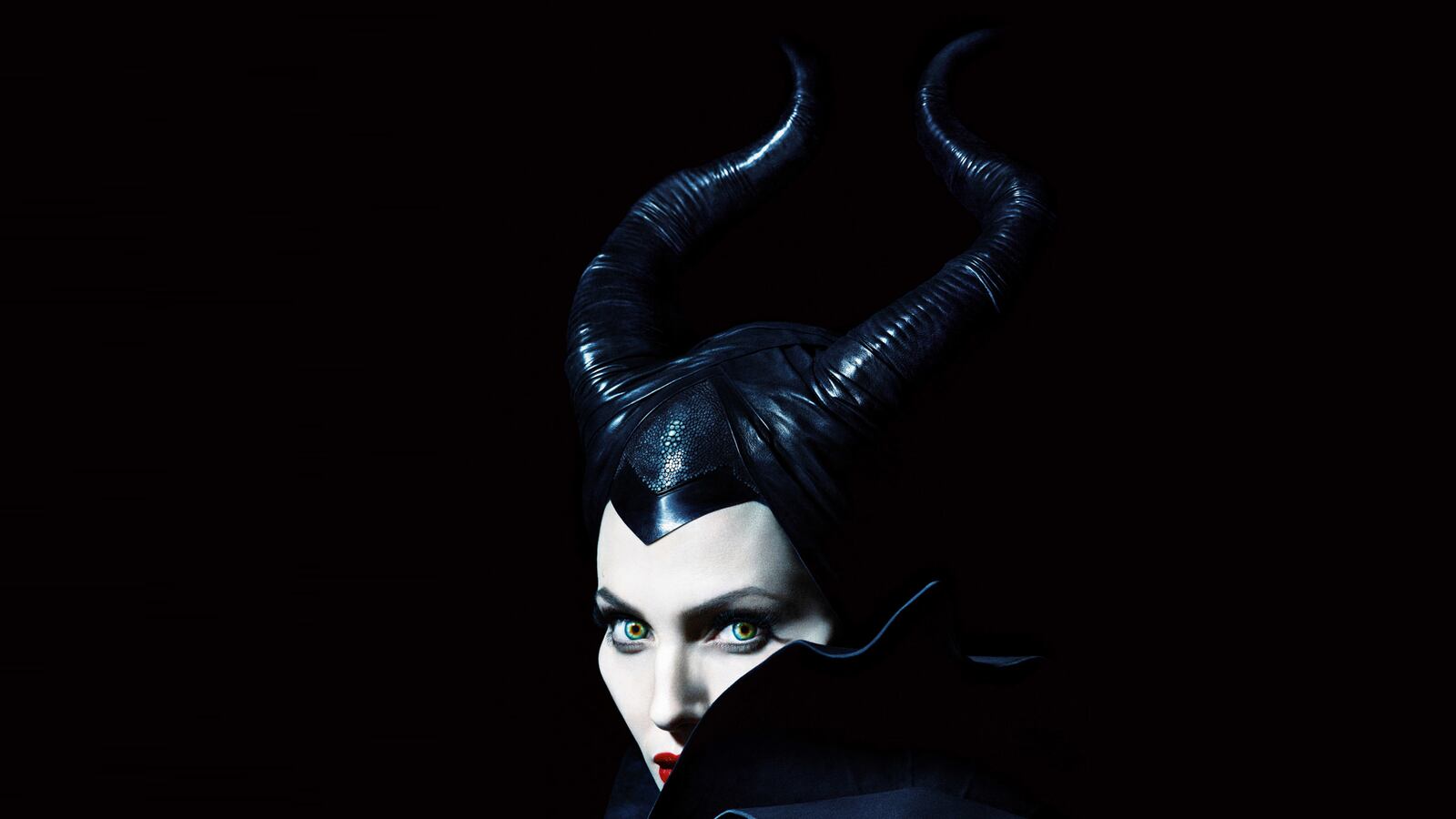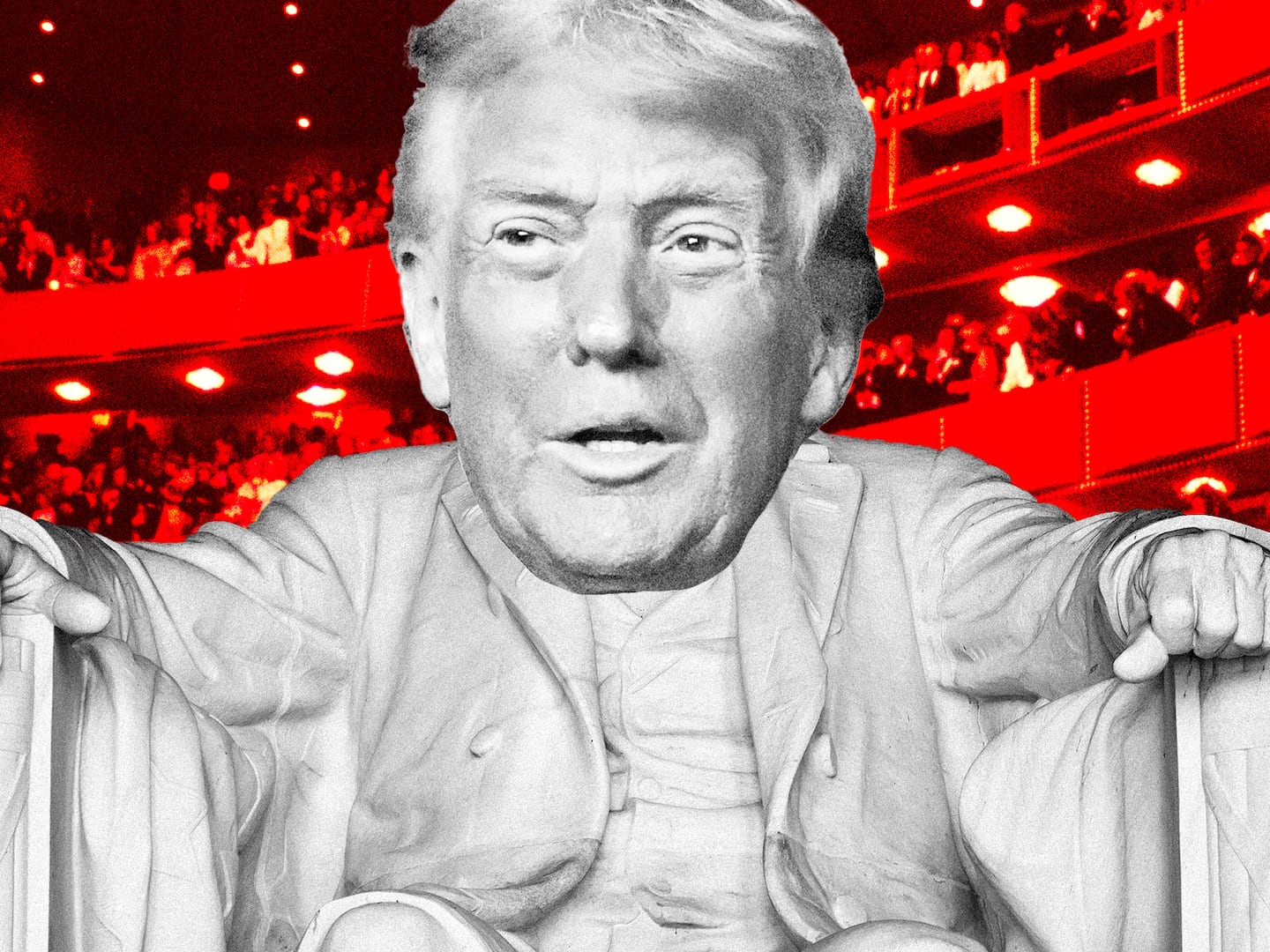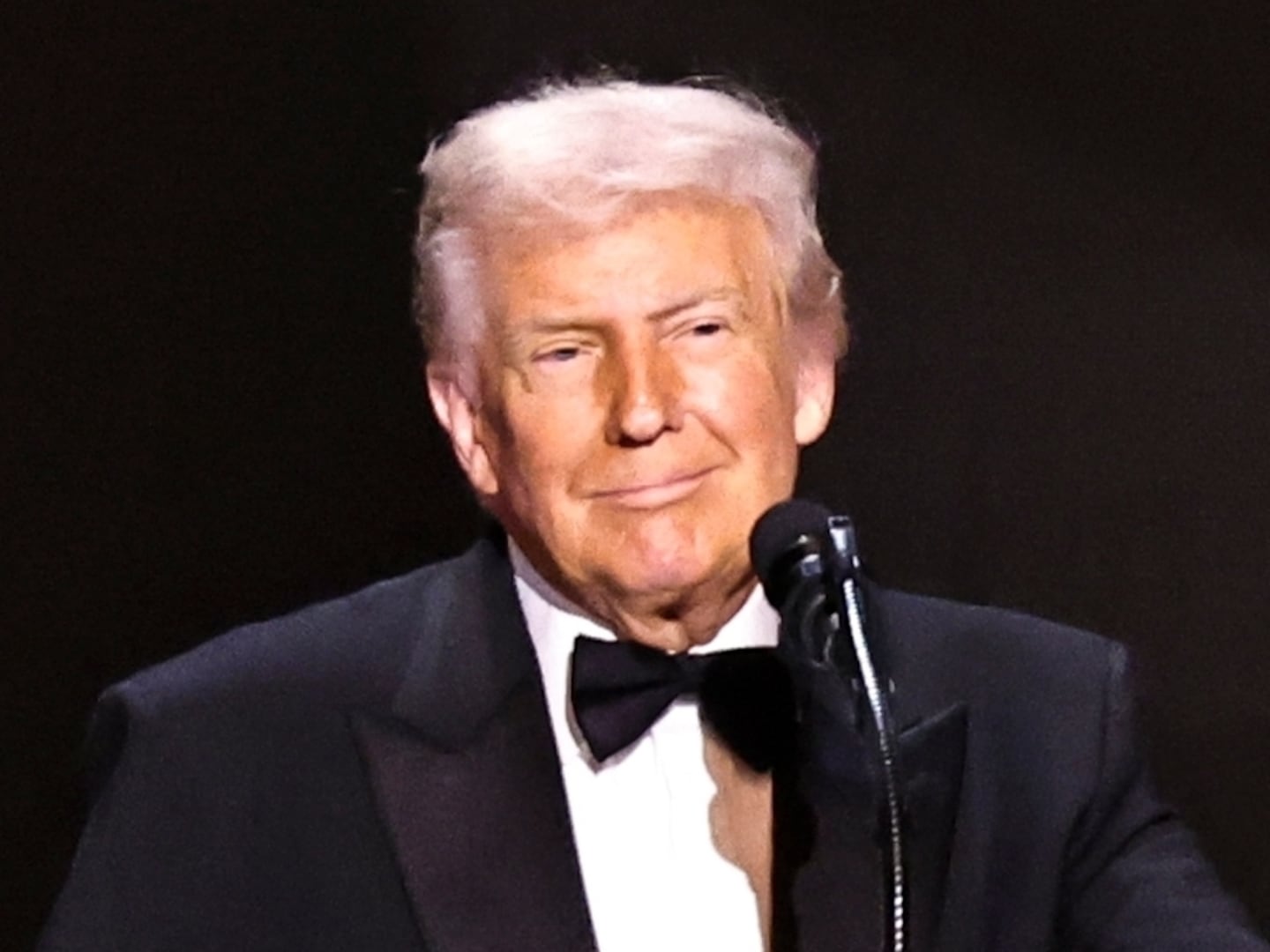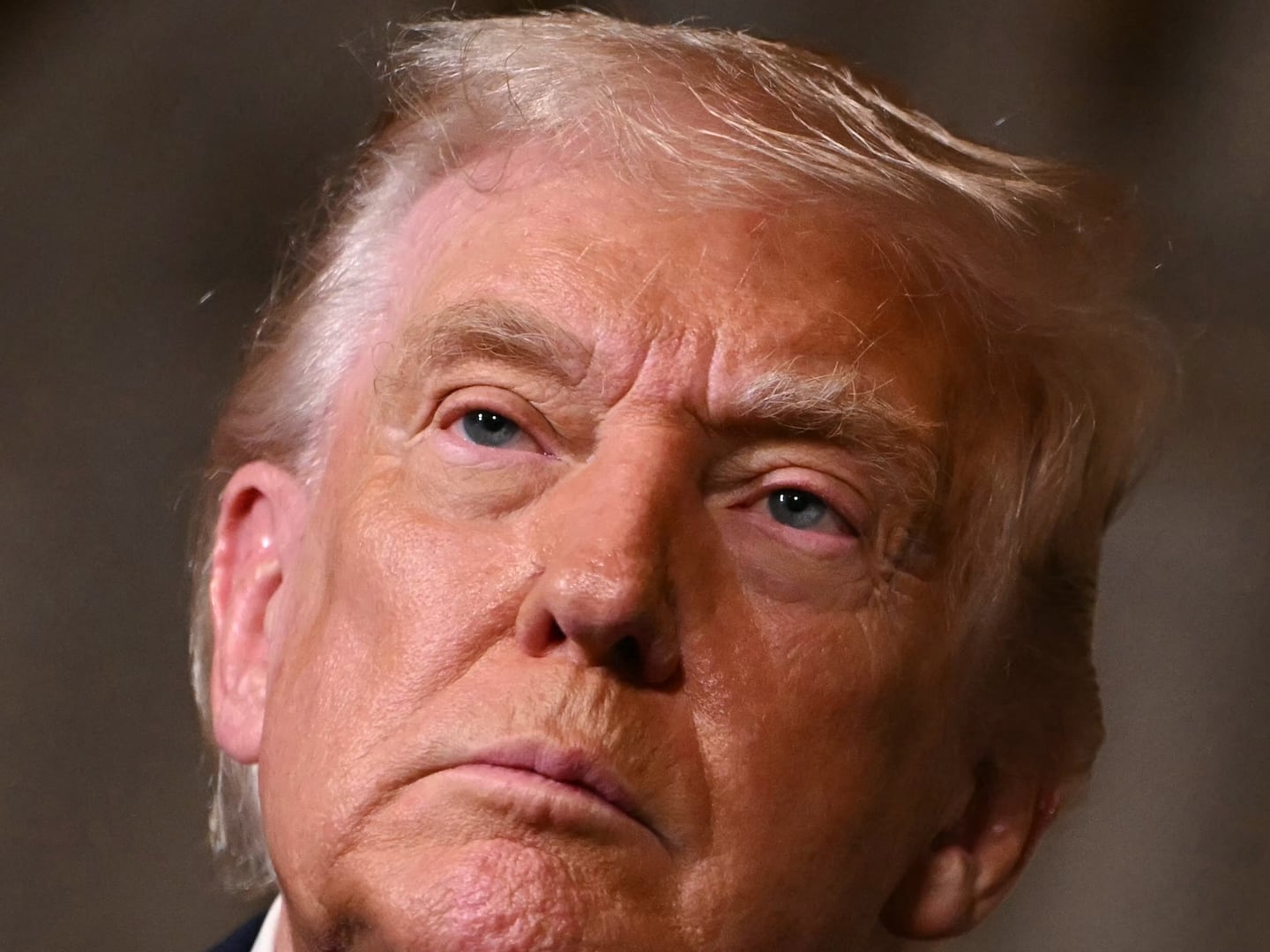Movie trends are pleasant enough at first—and then, like all trends, they get old. Whenever that happens, there’s always one movie that comes to be seen—maybe not right away, but eventually—as the straw that broke the camel’s back. The tipping point. The moment the shark was jumped. With Biblical Epics, it may have been The Robe. With Westerns, it may have been White Comanche. With Buddy Cop Movies, it was definitely Top Dog, an asinine romp starring a Briard named Reno (and also a less convincing actor named Chuck Norris).

And now, with Dark Reboots, it may be Maleficent.
Or at least it should be. For the last decade or so, Hollywood has been gripped by an obsession so all-consuming that no blockbuster has been safe from its dismal, brooding influence. I am referring, of course, to the industry’s ongoing infatuation with Dark Reboots. The formula is simple. Step one: Take a movie that’s already been made. Step two: Make it again. Step three: Make it dark. The production design? Dark. The cinematography? Dark. The characters? Even darker.
Do that too reflexively (and for too long) and Maleficent is what you end up with.
The Dark Reboot obsession has coincided, and in some cases overlapped, with several other Hollywood fads: The Superhero Fetish, The Origin-Story Craze, and so on. But ultimately the Dark Reboot is its own thing, and in many ways it’s more revealing—about Hollywood, and about us as viewers—than the narrower subgenres its movies may or may not fit into.
Christopher Nolan’s pitch-black Batman Begins, from 2005, was the first big Dark Reboot—the movie that set the template and kickstarted the trend—and since then, several Dark Superhero Reboots and Dark Origin-Story Reboots have followed in its wake (Man of Steel, The Amazing Spider-Man). But it didn’t take long for the Dark Reboot epidemic to spread to other areas as well: sci-fi classics (Planet of the Apes), monster movies (Godzilla), biblical epics (Noah), children’s adventure stories (Oz the Great and Powerful), fairy tales (Snow White and the Huntsman), and even the 007 series (Casino Royale). At this point, almost every sizable summer release seems to spring from those twinned impulses to make it again and make it dark—no matter what it’s actually about.
So why does Hollywood keep releasing reboots—and why do we keep responding to darkness? The first question is easier to answer. Show business is called “show business” for a reason: it’s a business. Since the turn of the century, the mid-budget studio film—the Nora Ephron romantic comedy; the Harrison Ford thriller—has largely vanished from the earth. There are many reasons for this: the excellence of cable TV, which scratches a similar itch from the comfort of home; the proliferation of streaming video, which gives adult audiences yet another reason not to pay $15 for a movie ticket; the dozens of other digital divertissements and distractions that now compete for our time; and the rise of foreign markets like China and India, where translating an explosion makes more sense than translating a screenplay.
The result is an industry that’s become completely addicted to pricey tentpole pictures. As Zachary Wigon has written, “You load up on potential tentpole projects, pour an enormous amount of money into all of them, and assume that the hits—and their forthcoming sequels and TV and DVD deals—will cover the losses from the misses, with enough money left over for a healthy profit.” In this world, reboots make perfect sense: if your survival depends on placing gigantic bets, might as well pick the proven property (X-Men, the Bible) over the unknown risk (the 2014 equivalent of, say, Waterworld).
The trend toward a kind of kneejerk darkness—a bleak gloss applied like an Instagram filter to pretty much every reboot out there—is harder to quantify, but it’s so prevalent that can’t possibly be coincidental. My theory is that it has to do with history, sociology, and psychology. So far, this century hasn’t been particularly sunny: a contested election, Sept. 11, two wearying, unwanted wars, and the worst economic downturn since the Great Depression. At the same time, the rise of the Internet has provoked a craving for so-called “authenticity” in response: attitudes, events, people, and products that somehow seem realer than the 1s and 0s we’re constantly absorbing online. So we demand realness in our movies—and reality is dark. Ergo, we gravitate toward darker movies.
Which brings us, finally, to Maleficent. The problem with Disney’s latest live-action movie, which retells the story of Sleeping Beauty from the perspective of the eponymous villainess, isn’t that it’s monstrously horrible. Angelia Jolie is actually pretty great in the title role—a haughty, elegant, wounded dame with hair horns, lizard-green eyes, and cheekbones that could slice a diamond in two. Plus the moors where she lives—all cascading waterfalls and glowing fairies and foreboding thorns—are rather lovely to look at it.
Instead, the problem with Maleficent is that it’s so concerned with checking the Dark Reboot box that it doesn’t even bother to fulfill the fundamental requirements of a motion picture—that is, to tell a story that a) makes sense and b) is worth telling.
If you’re planning to see Maleficent this weekend and you don’t want to know how it ends, stop reading now. Gone? Good. The basic arc goes something like this: Maleficent is a fairy with wings. She falls in love with a human named Stefan. The dying king tells Stefan that if he assassinates Maleficent, he will select the younger man as a successor. Stefan can’t bear to murder his fairy girlfriend, so he chops off her wings instead and presents them as evidence that the deed is done. Maleficent is not happy. She curses Stefan’s daughter Aurora—the spinning wheel, the sixteenth birthday, the death-like sleep that can only be broken by true love's kiss—but when the new king tries to circumvent the hex by hiding his princess in a house in the woods, Maleficent has a chance to get to know her from afar. She likes what she sees: a pretty, happy, kindly girl who closely resembles Elle Fanning. Maleficent’s heart softens. She comes to regret her actions. She tries—and fails—to reverse the spell. And eventually, after Aurora pricks her finger and passes out, it’s up to Maleficent to figure out that only her kiss can revive Sleepy Beauty—because she’s the only one who truly loves her. Oh, and then Maleficent slaughters Aurora’s dad and the two ladies live happily ever after on the moors. “The kingdom was saved by someone who wasn’t a hero or a villain,” Aurora says at the end of the movie. “But rather someone who was both.”
Sure, that’s a nice little tagline, but even now, 24 hours after I left the theater, I have no clue what Maleficent was trying to say—and I’m not sure the movie has any clue, either. We should trust the people who try to ruin our lives when we’re infants? Maybe shadowy figures who watch us play in the woods aren’t so bad after all? If someone kills our parents, perhaps we should consider moving in with them? I assume that if the filmmakers were asked, they might explain that, actually, the point of Maleficent is that nothing is black and white—that there is both hero and villain inside all of us. But this implies that we’re supposed to identify with Maleficent—a character who winds up stealing a child from her family. I’m not sure that’s what Disney had in mind when they greenlighted the project.
And that’s my point: with Maleficent, everyone was too busy trying to capitalize on a known quantity by giving it the ol’ Dark Reboot treatment that no one bothered to ask why they were rebooting this story in this way in the first place. That’s why there were so many reshoots and revisions and heavy-handed studio interventions, and it’s why the final product feels like a jumbled collage slapped together with bubblegum and glue. It’s hard to tell a straight story when you don’t have a good reason to tell it.
My hunch is that the Dark Reboot era has reached the point of diminishing returns—that Hollywood has already burned through its most suitable options and from here on out, filmmakers will have to contort their movies into ever more convoluted shapes to fit an increasingly tiresome mold. Someday, I hope the industry will start making a few more movies like the ones that reigned before the Dark Reboot conquered the world: movies with brighter colors and a lighter touch; movies that realized that humor could capture the complexity of life just as powerfully as pathos.
Take a look, for example, at the top-grossing films of 1994: The Lion King, Forrest Gump, True Lies, Dumb and Dumber, and Pulp Fiction, among others. All of them were original stories (with the exception of Forrest Gump, which departed significantly from its little-known source material); none of them were dark. 1984 was even better: Beverly Hills Cop, Ghostbusters, Indiana Jones and the Temple of Doom, Gremlins, Karate Kid, Footloose, and Splash.
Maybe Light Originals like these wouldn’t make any money in today’s market. But I sort of doubt it. Either way, we could probably use a little more Ghostbusters 1 at this point—and a little less Ghostbusters 3.






